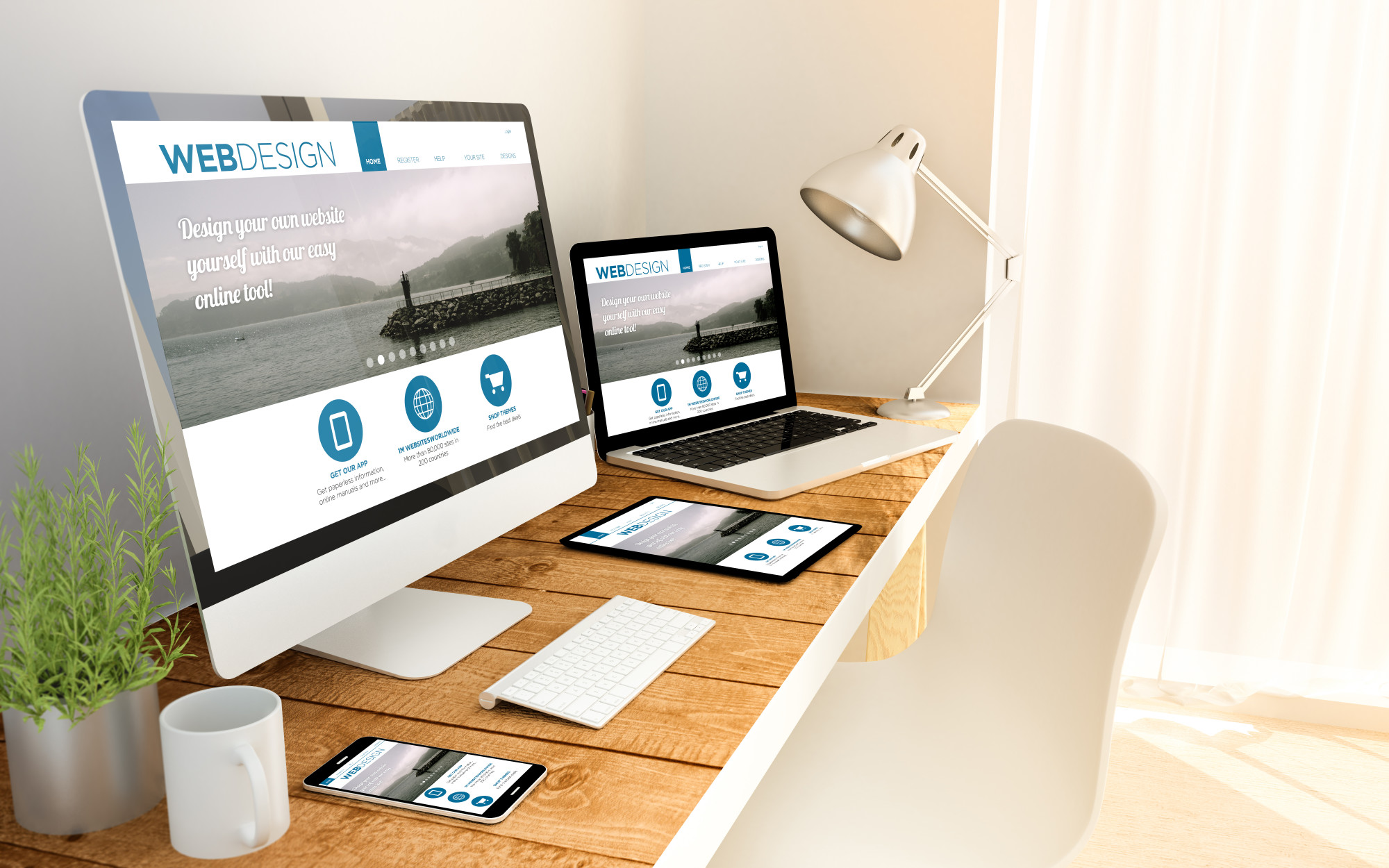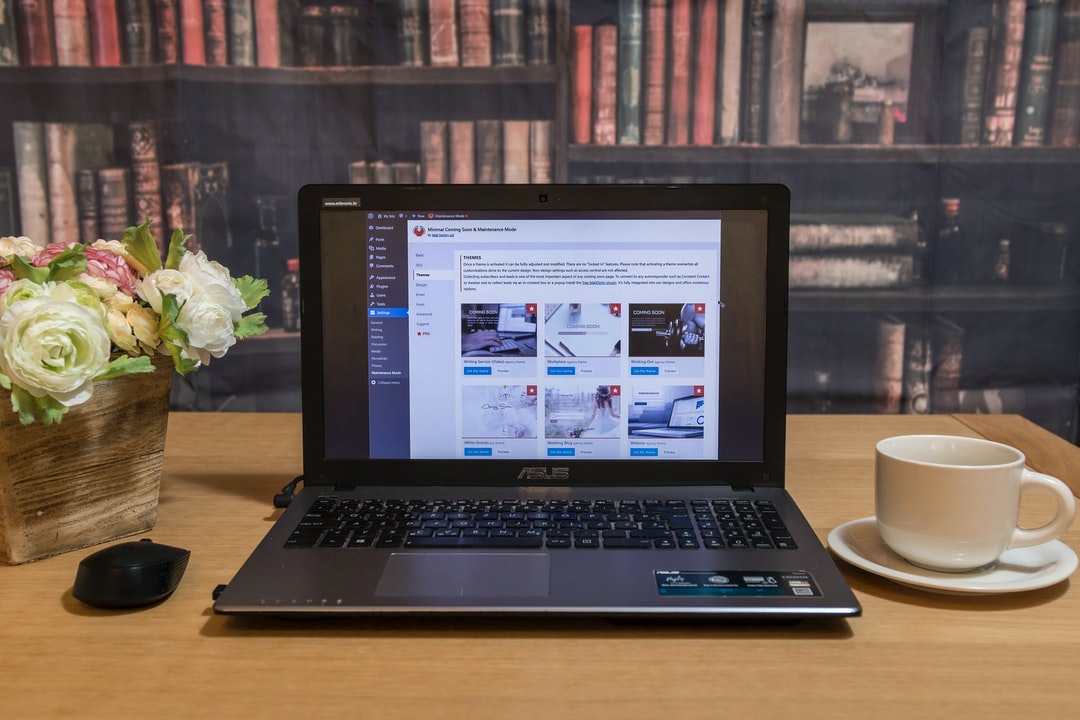Serif vs Sans-Serif — Which Is Right for Your Logo?
Posted on December 17, 2020 by Logo Design Tips and Tricks

Are you designing a company logo, for yourself or someone else? As well as choosing from designs and colors, one of the most demanding decisions you will make will be selecting a font. To portray the right image to your customer, you must get this right.
This big decision comes down to one determining factor, the serif and sans serif fonts. Below, we present a must-read guide on the serif vs sans-serif font debate and help you make a decision.
What Is Serif?
Fonts are divided into two main categories. These are serif and sans-serif fonts. Each can give a different message and attract different types of customers.
A serif is a small stroke that is added to the end of characters in a font. These are added on the vertical and horizontal axis. Serifs can appear on uppercase, lowercase, numerals, and other characters.
The size of the serif and level of ornamentation is dependent upon the designer. This is one of the main features that give a font its distinction.
Serif fonts are generally regarded as being easier to read in large texts. Adding the serif makes it easier for the eye to distinguish between characters. For large blocks of text, serif fonts are often the preferred font choice.
One example font is Times New Roman. It is the font of choice for many university and academic applications. This is because of the ease with which it can be read.
What Is Sans Serif?
Sans simply means ‘without’. A sans serif font does not have the flick and ornamentation of the serif. This can make it look very sleek and clean.
Many companies are choosing a sans serif font for their logo. This is because is they tend to be easier to read on digital displays, such as phones and computer screens. This has seen it adopted by large technology companies, which has enhanced its image as a modern, futuristic font choice.
Google recently changed its logo from a serif font to a sans serif for this very reason. At first, it was believed that the logo was too simplistic. However, the logo has now been adopted and the previous one is mostly forgotten.
Famous Logos With Serif Fonts
Serif fonts have an element of classicism and elegance about them. They have been used throughout time, and carry with them this association. They were originally used in ancient roman carved inscriptions, and are still used today, so carry longevity in their design.
Many brands that use them try to channel sophistication. Rolex, Dior, and Giorgio Armani are all high rolling fashion brands who trade on timelessness in their marketing. In automobiles, Honda and Volvo also use serif fonts.
Famous Logos With Sans Serif Fonts
Sans serif fonts have an element of directness about them. They are modern and forward-thinking. Many logos that use them are digital businesses, purely because they are easier to read on a computer screen.
Many high fashion companies use sans serif fonts to channel these qualities. Calvin Klein and Chanel are two examples. In the field of digital business, Microsoft, Facebook, and Air Bnb also use these fonts.
Serif vs Sans-Serif for Logo Design
When doing a logo design, the choice between a serif and sans serif font can come down to the image you want your company to convey. Part of this should tie into your mission statement. Bear in mind that the color you choose will also have a large impact.
The type of logo you choose can also have an impact on if you should use a serif or not. Some types of logos benefit from a certain type of font, and we have outlined them below.
Emblems and Wordmarks
The two main types of logo design are emblems and wordmarks. Emblems are larger, usually more ornate, and often with bent and curved fonts. Wordmarks are simple logos that use a font only.
A classic example of an emblem is the Starbucks logo. As a fairly new company, it uses a sans serif font in its logo design. The font is simple and easy to read.
Note that it is a sans serif font. This is because sans serif fonts tend to work better on emblems. The flick of a serif can often overcomplicate matters when designing an emblem, as so many other elements are also at play.
A good example of a wordmark font is the Visa logo. The focus is on the font itself, and the serif is even accentuated on the V in the logo. This hammers homes the message of sophistication and reliability.
The Visa logo also relies on a blue color scheme. This is a great example of color psychology. Blue is typically associated with reliability and stability, along with peace and tranquility.
Matching Up Fonts
When designing text-based promotional materials or websites, you should aim to use two fonts. More than this can get messy. Ideally, the fonts will want to complement each other.
Finding complementary fonts is easier than ever, as there are a host of generators and articles on the internet that will give suggestions. Generally, san serif fonts will be used for headings and subheadings, with serif fonts being used for the body of the text.
The hard part will be finding two fonts that complement the font used in your logo. For this, you will either have to experiment with some trial and error. If not, speed up the process by hiring a professional graphic designer to do the job.
Making a Decision
The final decision in the serif vs sans-serif debate comes down to your goals. What image do you want your logo or text to convey? Once you have this, you can consider different font styles, colors, and emblems or wordmarks.
If you enjoyed our handy guide, then visit the rest of our blog. We have a number of articles on everything from design to finance, to assist you in every facet of your business decision making.
4 Undeniable Signs Your Website Needs Some Refreshing
Posted on December 02, 2020 by Logo Design Tips and Tricks

It’s no secret that managing a business isn’t easy. As a small business owner, you understand this better than most people.
In today’s business world, there’s more competition than ever before. This means you have to use every tool available in order to stand out from the crowd. One of the most indispensable tools is a great website.
But when did you last update your site?
This article takes a look at how to know it’s time for a website refresh. Keep reading to get the inside scoop!
1. It’s Been a Few Years Since Your Last Refresh
When it comes to deciding whether or not to refresh your website, the first thing to consider is how long it’s been since your last refresh. After all, technology moves quickly. Thus it doesn’t take long for older technology to start dragging to the point it becomes nearly obsolete.
It’s also important to remember that your business has likely changed and grown along with the speed of technology, making it necessary to keep your website up-to-date.
You will also likely notice that you’re not getting as many leads through your website as you used to, making it hard for users to find you or locate what they’re looking for.
2. Your Website Isn’t Mobile-Friendly
The simple truth is that the vast majority of visitors to your website will come from mobile devices. Thus you need to maximize the mobile user experience.
It’s crucial to invest in a website refresh plan that will maximize responsiveness to mobile devices. Otherwise, you’ll risk alienating your customer base.
In fact, making your website mobile-friendly should be your top priority, especially if your goal is to drive as much online traffic to your site.
3. Pages Load Slowly
Take the time to look at your website. Try to navigate around the way a typical visitor would. How quickly do the pages load? Are the links fast and responsive, or does it take an extended period of time to perform as designed?
Very few things will kill your online business faster than a slow website. A refresh that speeds up performance is more than worth the website refresh cost.
If your website video content is outdated and slowing down your site, Michigancreative.com can help you create quality videos that are optimized for site speed.
4. High Bounce Rate
Another factor to watch out for is a high bounce rate. Your bounce rate refers to the percentage of users that visit a page and then leave the website without doing anything on that page.
When your bounce rate is high, your search engine rankings will likely drop. A website refresh will switch things around and help keep the bounce rate low.
A Businessowner’s Guide to the Benefits of a Website Refresh
Keeping your online business running smoothly should be a top priority. These tips for identifying the need for a website refresh will help keep your operation running as efficiently as possible.
Explore our blog to find more business tips.
A Beginner’s Guide to Web Design: Steps to Design Your Custom WordPress Website
Posted on October 12, 2020 by Logo Design Tips and Tricks

Building a custom WordPress website is a great way to express yourself creatively while adding another stream of revenue to your income or boosting the performance of an existing business.
That said, there are almost 2 billion websites in existence across the web, so it’s important to know what you’re doing before you start if you want to create a successful site. Regardless of your chosen niche, you’re going to have a lot of competition!
To help you in this endeavor, we’ve created a complete guide to designing the ultimate WordPress website. By following these steps, your website will have a healthy following in no time.
Keep reading to learn more!
Choose a Web Host
Before you can begin building your website, you need to choose a web hosting service, as WordPress is simply a content management system, it doesn’t host websites.
As long as your chosen service meets the minimum hosting requirements set by WordPress, you can use any web hosting provider you like. That said, WordPress recommends the use of one of the following: Bluehost, DreamHost, and SiteGround.
When you’ve chosen your company, you’ll need to pick a plan. This will depend on the level of resources your site will require. If you’re unsure, go smaller rather than larger. You can always upgrade down the road if you need to.
Pick a Theme
Once you have your WordPress and hosting accounts and thus have access to the backend of your website, you’re ready to start building. The first step you’ll need to take is to pick a theme. There are thousands upon thousands of themes to choose from, and it’s an important decision, so take your time making it.
Start by narrowing down the selection of themes by the type of website you have. If you’re building an e-commerce website, the theme you need will be much different than someone running a blog.
Pro tip: always browse the live demos of potential themes. Your finished website probably won’t be exactly like the demo, but you can get a good idea of how that specific theme looks and functions.
Install Your Plugins
When making a custom WordPress website, your theme is just the jumping-off point. You’ll make tweaks here and there to make the theme suit your style and install plugins to enhance both your experience and your users’.
Now, like themes, there are a wide variety of plugins to choose from, and you don’t want to overdo it. You can do a lot with your site without them, you can even create a WordPress redirect page without plugin.
Bogging your site down with too many plugins can negatively affect its speed and even put your security at risk.
Instead, only install plugins that you think will truly benefit you and your users. And when making your selections, remember that plugins are only vetted for security, not quality. Check out the reviews of each plugin before you download it.
The two plugins you absolutely have to have are an SEO plugin and an analytics plugin.
Benefits of an SEO Plugin
Without a solid SEO strategy, you can’t hope to have a successful website. That said, SEO can be a bit overwhelming when you’re first starting out, so a plugin to help optimize your site can be a lifesaver.
Yoast SEO, for example, will analyze your keywords and content and give you a report at the end of each post, making suggestions for improvement. This SEO plugin also helps with more technical processes such as managing sitemaps and robots.txt files.
Benefits of an Analytics Plugin
In order to track the performance and growth of your website, you need access to analytics. WordPress offers certain performance metrics, but they’re often inaccurate, not to mention they aren’t detailed enough to be very helpful.
Your best bet is to install a Google Analytics plugin. This plugin will give you insight into how visitors use your site, which posts and pages are most popular, and how long the average user spends on each.
The best part about this plugin is that you’ll be able to see all of this information right from your dashboard! You won’t have to switch between websites and services to get the full picture.
Keep Your Site Safe
After all the time and hard work it took to build your own WordPress website, the last thing you want to happen is for it to fall into the hands of hackers and bugs. Because WordPress is such a popular platform, it’s a common target for hackers.
One of the best, and simplest, things you can do for your website is to keep it updated. Whenever a new version of WordPress or your specific theme comes out, download it immediately. It can be helpful to give WordPress permission to install them automatically.
You also need to get an SSL certificate. This is included free with most hosting services, all you have to do is opt-in. An SSL certificate will encrypt all of the information on your site, including your and your users’ data.
In addition, take care to make frequent backups of your site. If something happens to your website, you’ll be able to download the latest backup instead of starting over from the beginning.
Start Building Your Custom WordPress Website Today
Building a custom WordPress website can feel complicated, but by knowing the basics, you can focus less on the initial setup and more on the creative (and fun) aspect of web design.
Use this guide to get your site started, then get to work customizing a WordPress template to make it your own. Before you know it, you’ll have a beautiful, thriving website that you can be proud of.
For more web design tips and tricks, take a look at our blog!
6 Key Advantages of Professional Web Design
Posted on October 12, 2020 by Logo Design Tips and Tricks

The internet is one of the most powerful tools business owners have at their disposal. It makes getting your company in front of prospective clients and customers easier and gives you a way to market your brand to a wider audience.
Believe it or not, more than 65 percent of people believe that the internet is the best place to find information about companies and businesses.
To make the most of this tool, you’ll need a great website in place. Though it’s possible to design the site on your own, doing so isn’t always the best idea.
Here are a few key benefits of investing in professional web design for your company’s website.
1. Professional Web Design Inspires Confidence
One of the biggest challenges for any business is inspiring customer loyalty and confidence in your brand. When you’re new to the industry, you need to create an image that makes your company look professional, knowledgeable, and better than the competition.
If your website is overly simple or uses a theme that countless other businesses already use, customers won’t be as likely to work with you.
Why? Because your brand doesn’t stand out as a trustworthy provider. Instead, you blend in with others and fail to communicate just how unique your company is.
By investing in professional website design, you’ll immediately inspire confidence in both current and prospective customers. Remember, your website is your best chance to make a great first impression. A professional website design will do just that.
2. It Keeps Your Company Competitive
Like it or not, the internet opens businesses up to more competition both locally and across the country. This means your website needs to always look its best and attract the type of attention you want your business to get.
When you handle your own website design, you’ll find it harder to keep up with your most successful competitors.
They’ve likely invested in professional design and take the time to make updates to their websites often. When you’re on your own, keeping up with those changes or implementing them first won’t be easy.
Professional design experts can create a website that rivals your competitors’ and makes it easy for you to maintain your edge over time.
3. Great Designs Save You Money in the Long Run
Believe it or not, working with a web design company can often save you money compared to managing everything on your own. Think of it this way: when you design a website without a professional designer, you’ll sacrifice your time to the process.
At best, it will take a few days to get everything up and running. At worst, it can take months of trial and error to get things right.
That’s time you’re not able to spend doing your job and earning the money you need to keep the business afloat.
With the help of a professional web design company, the site will be up and running fast. You’ll be able to focus on keeping the business running smoothly and efficiently without sacrificing the quality of your website.
4. Pros Can Optimize Your Site for Search Engines
Search engines work to help people searching online find businesses and service providers that meet their needs. A well-designed website is the best way to attract positive attention from those search engines.
It needs to be responsive, have features that search engines can read, and content that shows the search engines what the business is all about. The more optimized it is, the more traffic the site will get and the more business you’ll receive.
Unfortunately, optimizing websites for search engines while also making a good impression on prospective customers isn’t as simple as you might think. Trying to handle it yourself is the easiest way to send your site to the bottom of the search engine’s result page.
Professionals can optimize the site quickly so it’s ready for both customers and search engines as soon as it goes live.
5. Mobile Responsiveness Is a Must
More people rely on mobile devices to connect to the internet than any other method. In fact, by 2025, an estimated 72 percent of people will use only their mobile devices to access the internet.
Unfortunately, many standard website designs get built for computers, not tablets and smartphones. This means the websites won’t look as good and may not display information correctly.
When you work with a professional, mobile-responsive designs are much easier to put in place. In fact, many designers include the service as part of their normal website build.
This saves you from having to create two distinct website designs. Even better, it spares you from learning the nuances of transitioning from standard computer layouts to mobile-friendly versions.
6. Future Updates Will Be Easy to Make
Those free website design templates are incredibly simple and basic. This is great if you’re designing the site on your own. However, they make future updates incredibly tough to implement.
One of the key advantages of a website built by a professional is that they’re designed with future updates in mind. Making changes to the layout, content, and even the color scheme is easy and fast.
Many business owners will find those changes easy to implement themselves. However, if you need help, your website designer will be able to make the necessary updates for you.
See These Professional Web Design Benefits for Yourself
Though it’s possible to build a website on your own, it’s not always in the best interest of your business. Investing in professional web design is one of the best things you can do.
Once the site is live, you’ll see these benefits almost immediately.
Just remember to take your time and find a design expert that you trust. Look at examples of their previous work and don’t hesitate to ask for references to see what other clients thought of their services.
For more helpful tips to make taking your business online as simple as possible, check out our latest posts.








